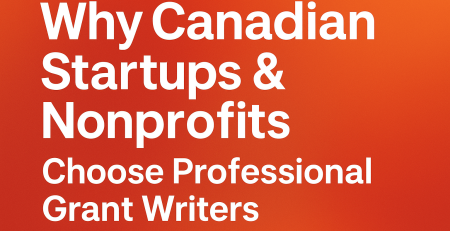How to Write Grants for Nonprofits: A Winning Guide
Grant writing is an imperative skill for nonprofit organizations in search of funding for a cause. Grant funding helps nonprofit organizations build programs, serve communities, and become long-term sustainable entities. Grant writing, however, comes with successful grant propositions, and it necessitates careful planning, research, and effective narrative crafting. How to Write Grants for Non profits is a complete guide based on themost significant processes that we utilize at “Lumineup” to win grants for nonprofit organizations.
1. Familiarize Yourself with the Grant Landscape: Before writing, one must understand the types of grants available. There are three primary sources for nonprofit grants that the writer needs to be familiar with:
- Government Grants: Funded through federal, state, and local agencies, these grants involve a high level of competition but reward considerable funding.
- Foundation Grants: Provided by private charities and foundations, these grants are often focused on specific communities and causes.
- Corporate Grants: Many companies offer funding to nonprofits as part of their corporate social responsibility (CSR) programs.
The first key to success is knowing the proper type of grant for your nonprofit organization. We recommend, tapping into different grant sources to improve your chances of grant hunting.
2. Research Grant Possibilities: Not all grants will apply to your nonprofit. Do your best to seek out grants that align with your nonprofit’s mission, objectives and geographic focus. Implement these strategies:
- Develop Grants Databases: Use platforms like funds for NGOs, Grant Watch, Candid (formerly Foundation Center), and Grants.gov to access in-depth lists of available grants.
- Networking: Attend nonprofit events and connect with funders to learn about new funding opportunities.
- Review Past Grantees: Look at past recipients of grants from a particular funder to assess your chances.
3. Read and Understand Grant Guidelines: Each grant has its own eligibility criteria and requirements. Carefully review the Request for Proposal (RFP) or grant guidelines before applying. Pay close attention to:
- Eligibility requirements (geographic focus, nonprofit status, etc.)
- Application deadlines
- Required documentation
- Budget restrictions
- Reporting expectations
Failure to comply with guidelines is a common reason for grant rejection, so ensure full adherence. This shall greatly enhance your chances of success.
4. Writing an Engaging Grant Proposal: A successful grant proposal must be clear, persuasive, and well-structured. Below are the essential components:
a. Executive Summary: The executive summary provides an overview of your proposal and should include:
- A brief description of your nonprofit
- The problem you aim to address
- Your proposed solution
- The funding amount requested
b. Statement of Need: This section explains the issue your nonprofit is tackling. Use data, statistics, and real-life stories to illustrate the urgency of the problem and demonstrate why funding is crucial.
c. Goals and Objectives: Clearly outline your project’s goals and measurable objectives. Goals should be broad, while objectives should be SMART (Specific, Measurable, Achievable, Relevant, and Time-bound).
d. Project Description and Implementation Plan: Provide a detailed description of your project, including:
- The activities you will undertake
- The timeline for implementation
- The target audience
- Expected outcomes and impact,
- Use a structured framework to present your plan effectively.
e. Budget Justification: A detailed and realistic budget is critical. Break down expenses into categories such as personnel, equipment, supplies, and administrative costs. Ensure that each expense is justified and aligns with the funder’s requirements.
f. Sustainability Plan: Funders want assurance that your project will have a lasting impact beyond the grant period. Explain how you will sustain the program through additional funding, partnerships, or revenue generation.
g. Evaluation Plan: Clearly define how you will measure your project’s success. Use qualitative and quantitative metrics to track progress. Funders value a strong monitoring and evaluation framework.
5. Implement Best Practices in Grant Writing: To maximize your chances of success, follow these best practices:
- Use Simple and Clear Language: Avoid jargon and complex terms. Make your proposal easy to read and understand.
- Tell a Story: Use storytelling techniques to connect emotionally with funders and illustrate impact through real-life beneficiaries.
- Align with the Funder’s Priorities: Tailor your proposal to match the funder’s mission and focus areas.
- Be Data-Driven: Support your claims with research, statistics, and evidence.
- Proofread and Edit: Errors and inconsistencies can hurt your credibility. Review your proposal multiple times before submission.
6. Submit Your Proposal on Time: Grant deadlines are strict, and late submissions are not accepted. Prepare all documents in advance and submit your application well before the deadline to avoid last-minute issues.
7. Build Relationships and Follow Up: After submitting your proposal:
- Confirm receipt with the funder.
- If awarded, express gratitude and comply with all reporting requirements.
- If rejected, request feedback and improve for future applications.
If you are looking for more information on How to Write Grants for Non profits, feel free to CONTACT US.







Leave a Reply